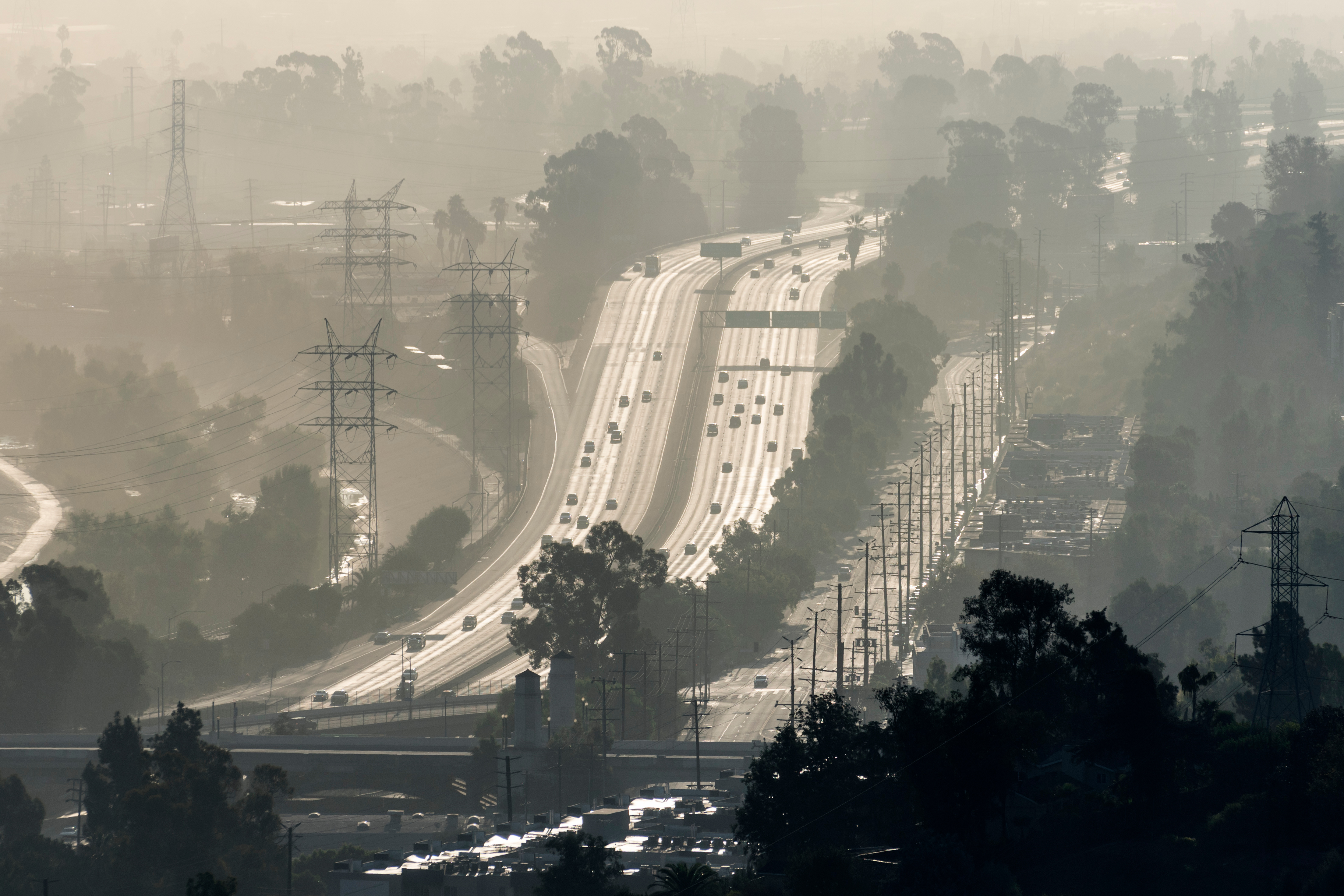News | Los Angeles Communities That Drive Less Are Exposed to More Vehicular Air Pollution
Stop the VideoNews

Los Angeles Communities That Drive Less Are Exposed to More Vehicular Air Pollution
Wednesday, May 3, 2023
by Geoff Boeing, Ph.D.

When the modern expressway system was built, vast swaths of urban neighborhoods were bulldozed to clear new channels for suburban residents to drive to job centers. Yet some older neighborhoods survived relatively unscathed. In Los Angeles, local residents organized to protest and eventually cancel plans to extend State Route 2 through the affluent communities of Beverly Hills and Los Angeles’s westside. In contrast, similar grassroots efforts failed in Los Angeles’s eastside, where several major freeways carved up less-affluent and less-white neighborhoods. These patterns of race, wealth, and political power shaped our transportation systems. Most studies of inequitable exposure to air pollution examine exposure differences between ethnic groups or income groups. But a better measure of injustice would ask: how much vehicular air pollution are you exposed to in relation to how much you drive?
Funded by the Pacific Southwest Region University Transportation Center (PSR UTC), the research, published in Urban Studies, answers this question across Los Angeles. All else equal, the research reveals that census tracts whose residents drive less are exposed to more vehicular air pollution. Tracts with a larger non-white population proportion—whether high- or low-income—experience more air pollution than do whiter but otherwise similar tracts. On average, white commuters traverse tracts that are far more non-white than the tracts where most white commuters live. This disparity does not exist in the opposite direction: on average, non-white commuters do not travel through tracts that are substantially whiter than their home tracts. This brings us back to our earlier example of State Route 2 through Beverly Hills being canceled while Los Angeles’s eastside was carved up by freeways. Today, when white commuters traverse non-white tracts, they do so predominantly through tracts that contain highways. In other words, white commuters receive the benefits of driving on a highway, but because those highways are predominantly in non-white neighborhoods, other groups bear external costs (such as air pollution) of that driving.
Several policies can help mitigate this injustice. First, policymakers could continue raising fuel efficiency standards for new cars and encouraging vehicular electrification. Second, policymakers could enact tolls or other forms of congestion taxes to reduce total driving or capture its externalities. Third, policymakers could discourage commuting altogether by incentivizing more people to work from home, such as through tax credits. Fourth, policymakers can address environmental injustice through the housing market. Permitting more residential construction in job-rich neighborhoods could reduce commute distances, and legalizing the construction of denser and more affordable housing in less-polluted, exclusive neighborhoods could reduce exposure disparities. Finally, providing safer and more functional public transit and cycling infrastructure can encourage motorists to choose less-polluting modes of transportation.
In two recent articles, the Los Angeles Times covered this research, amplifying its message and impact. Yet the Los Angeles Time articles received backlash from some media outlets misrepresenting the basics of urban history and caricaturing the quest for justice. Academics and practitioners must continue to interrogate difficult issues. No single policy today can eliminate the path dependence of historic and systemic discrimination against non-white communities. The study is a step, revealing the nature of air pollution injustice in Los Angeles. Dismantling decades of racially-motivated transport planning and segregation requires concerted effort by planners and policymakers to redress past harms and envision a more equitable future.
Dr. Boeing received his Ph.D. in City and Regional Planning from the University of California, Berkeley. Prior to joining the Price School, he was an Assistant Professor of Urban Informatics and Planning at Northeastern University’s School of Public Policy and Urban Affairs. His research revolves around city planning, urban form, data science, and urban informatics.
To read his research report please visit METRANS | Research Projects
News Archive
- December (1)
- November (6)
- October (4)
- September (2)
- August (3)
- July (4)
- June (3)
- May (7)
- April (8)
- March (11)
- February (8)
- January (7)
- December (7)
- November (8)
- October (11)
- September (11)
- August (4)
- July (10)
- June (9)
- May (2)
- April (12)
- March (8)
- February (7)
- January (11)
- December (11)
- November (5)
- October (16)
- September (7)
- August (5)
- July (13)
- June (5)
- May (5)
- April (7)
- March (5)
- February (3)
- January (4)
- December (4)
- November (5)
- October (5)
- September (4)
- August (4)
- July (6)
- June (8)
- May (4)
- April (6)
- March (6)
- February (7)
- January (7)
- December (8)
- November (8)
- October (8)
- September (15)
- August (5)
- July (6)
- June (7)
- May (5)
- April (8)
- March (7)
- February (10)
- January (12)















